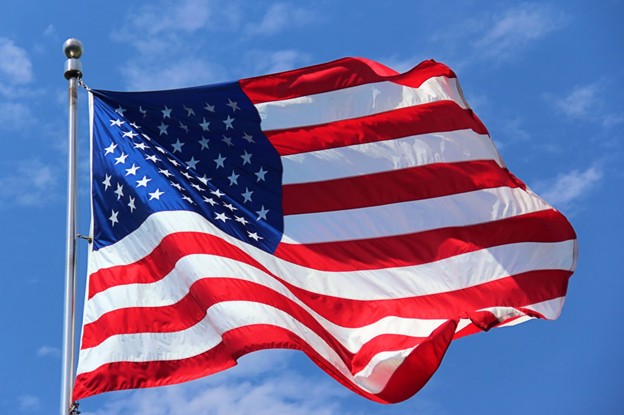National Patriotic InstructorJeanne Ullmer
The History of the Stars and Stripes The Stars and Stripes originated as a result of a resolution adopted by the Marine Committee of the Second Continental Congress at Philadelphia on June 14, 1777. The resolution read: "Resolved, that the flag of the United States be thirteen stripes, alternate red and white; that the union be thirteen stars, white in a blue field representing a new constellation."
The resolution gave no instruction as to how many points the stars should have, nor how the stars should be arranged on the blue union. Consequently, some flags had stars scattered on the blue field without any specific design, some arranged the stars in rows, and some in a circle. The first Navy Stars and Stripes had the stars arranged in staggered formation in alternate rows of threes and twos on a blue field. Other Stars and Stripes flags had stars arranged in alternate rows of four, five and four. Some stars had six points while others had eight.
Strong evidence indicates that Francis Hopkinson of New Jersey, a signer of the Declaration of Independence, was responsible for the stars in the U.S. flag. At the time the flag resolution was adopted, Hopkinson was the Chairman of the Continental Navy Board's Middle Department. Hopkinson also helped design other devices for the Government including the Great Seal of the United States. For his services, Hopkinson submitted a letter to the Continental Admiralty Board asking, "whether a Quarter Cask of the public Wine will not be a proper & reasonable Reward for these Labours of Fancy and a suitable Encouragement to future Exertions of a like Nature." His request was turned down since the Congress regarded him as a public servant.
|

